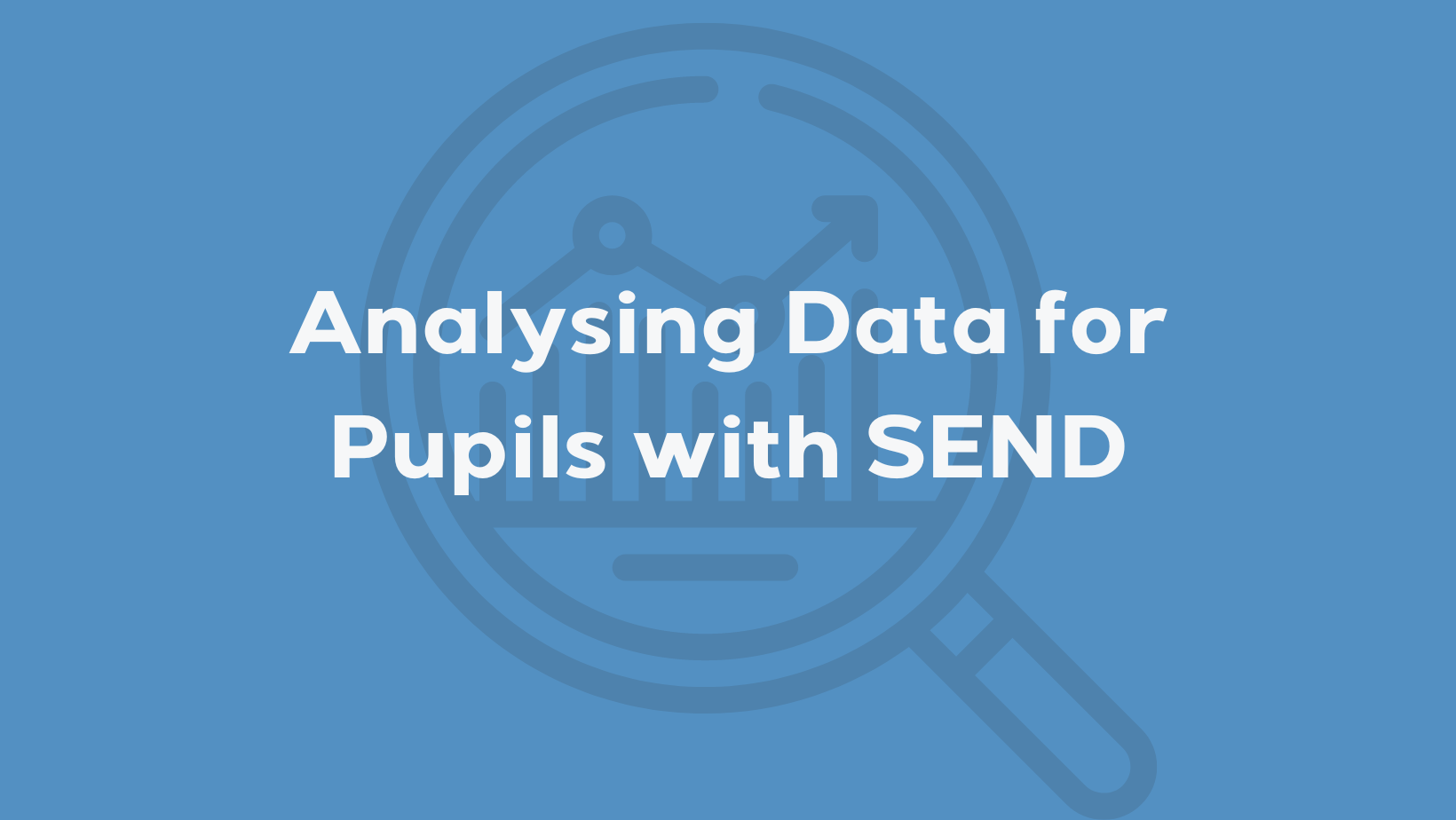Data should be useful, powerful, and used to improve outcomes for pupils. There are graphs and spreadsheets everywhere, but is it making a difference? Lots of people are not confident with data. This is often because they are not sure what they are looking for or what questions to ask of their data. The problem is not the data, the problem is they don’t know what they want answers to. The data you analyse could change each year, it is not about finding a process you do every year and repeating forever. The questions you ask each year will be changing, so the analysis you do each year should change.
Analysing data shouldn’t be complicated, it is about answering questions, asking more questions and keeping the process simple. When you share data with others, they shouldn’t be scared, they should be able to understand the data and be part of the conversation around finding a solution.
Types of Data
When we think of data, we typically think of numbers, tables, and graphs, but these aren’t the only type of data. You can generally think of two types of data, quantitative and qualitative. Quantitative data is numbers based, countable or measurable. A score in a test, their attendance, their age, height is all quantitative. It is fixed and universal. Qualitative data is descriptive, or interpretation based. This could be a conversation with a pupil, an email from a parent, a photo or video of a pupil doing something. Qualitative data is subjective and unique. You will generally find quantitative data is used with large data sets, to make analysing and summarising data easier. You will find qualitative data use with small groups or individuals where the data is more nuanced and personal.
What is Attainment?
Attainment is a measure of a pupil’s ability against recognised education standards. Or to put it more simply, what a pupil has achieved within an educational context. Achievement and attainment are very similar, but attainment is looking within an educational context and achievement is looking at a much wider range of skills. Achievement covers much wider skills and for pupils with SEND these skills that are often more important than the academic skills. It could be older pupils working towards independent living or it could be younger pupils learning how to build friendships.
What is Progress?
The simplest way to look at progress is linear progress. This is the most common way of looking at progress and the way every system tracks progress. If you want to know what the progress is in English Reading, you compare two attainment point that only look at their current level.
Linear Progress
In your school improvement plan, you will set out areas you want to improve, how you will do it and the success criteria. One issue I often see here is the success criteria. The success criteria are based on pupil performance, creating the targets schools use when judging progress. The school should use success criteria linked to the cause, not the effect.
Non-Linear Progress
Non-linear progress is about celebrating all progress. Instead of ignoring a pupil’s ability in decoding and focusing on their struggle with comprehension, non-linear progress recognises all the progress they make. Pupils with SEND don’t develop in a nice simple uniform way and they can have multiple barriers. Some of these barriers stop a pupil from making progress if you only look at progress in a linear way.
Engagement/Achievement
Before a pupil can achieve a skill, they need to engage with the activity. If they don’t engage, there won’t be progress. Once a pupil has engaged with an activity, they may require a lot of support. This could be physical hand over hand support, verbal prompting etc. When we look at progress, if a pupil is not achieving things independently, most systems would show that there is no progress. It is important for these pupils to look at the level of engagement/achievement. If the pupil is engaging in more activities/learning opportunities or are they requiring less support to achieve skills, they are making progress.
The three ways of looking at progress above are ways to demonstrate progress with data you have recorded. They are quantitative. Not all progress is recorded as schools don’t have ways to record data for everything they do. If you want to show that attendance has improved, you will have data. If a pupil is anxious about school and you are supporting the parents to help to reduce this anxiety, you probably won’t have data that you can use. What you will have is feedback from staff on how the pupil is when they arrive at school. You will also have conversations with the parents or have emails from parents discussing the pupil’s anxiety and how they are at home. This is all qualitative data.
Which Type of Progress is Best?
The answer is it depends on the pupil and what you are measuring. There is no single answer. It would be so simple to use one method to look at progress, but it would not be effective. Yet this is what nearly every school uses. They all use linear progress as it is the simplest to use and works for most pupils well. The main reason for this is most schools are only measuring academic progress because that is what they are asked for and the people pulling the strings want to see. The other reason is the systems they use to produce their data can only handle linear progression.
For pupils with SEND, we need to understand that assessing pupils and showing progress is not a simple process. Assessing and showing progress will always require more time than for non-SEND pupils. The process won’t be as simple. I am not saying it needs to be over complicated, it needs to be able to identify where progress is or isn’t being made and identify the next steps. This will always be more complicated than a judgement of below, expected or above, because it needs to be.
Analysing Your Data
How you analyse your data is about asking and answering questions. If you don’t have any questions, there is nothing to really analyse. You need to have questions you want answers to. There are some generic questions you can ask of every school’s data; this will lead to more complex questions as you dig deeper. A few examples of these generic questions are:
- Boys vs Girls? Is there a difference? Why?
- How do Pupil Premium/PEF/PDG pupils compare to the rest of school? Why?
- Does ethnicity have an impact on progress or attainment? Why?
- How does progress compare to last year? Why?
- How do Looked After Children compare to the rest of the school? Why?
Asking these questions and looking at the data might tell you something about your school, but you have to ask why? The data can’t tell you, that is a question you need to ask of your school, a question to discuss with senior and middle leaders.
Sharing Data
The data you share will be data that makes a difference to pupil outcomes. This could be areas for concern, areas of change or areas to show the impact of improvements. Does looking at graphs for 20 minutes of everything looking great help the school? No. Do you need to celebrate that everything is looking great? Yes. Does it need a graph? Probably Not. Do not spend time creating graphs or reports that do not impact on pupil outcomes.
The data you share needs to answer the questions you are asking in a clear, concise manner. It shouldn’t be a big excel spreadsheet where you have to find the anomalies yourself and then work out what it means. Making the data as simple and clear as possible helps people to understand the relevant data. You can then move on to the discussion around the next steps. In reality, the aim is to spend as little time looking at the data you have shared and as much time discussing solutions.
They don’t want to see your data. They want you to understand your data, they want your data to drive changes in your school and they want to see you implementing those changes. There is no folder full of graphs you need to make each year. There is no guidance what data you need to create. There is no requirement for your data to be in any format. They just want to make sure your data is helping you improve your provision.
What is Good Progress?
What is good progress? Only those who really know a pupil can answer that.
What is good progress for one pupil might not be good progress for the next. Progress needs to be judged individually in a way that suits the pupil, based on their needs.
Answering the question ‘Is progress good enough?’ depends on which version of the question you are asking. Are you asking –
Has the pupil made good progress with the quality of teaching and support available?
OR
Has the pupil made good progress based on the number of learning opportunities in this area?
OR
Has the pupil made good progress?
Sadly, the answer to these questions can be very different. If you cannot remove barriers for a pupil and you are not effectively supporting them, the progress cannot be good. But the school might feel the pupil is making good progress. They are making the best progress they could achieve because the school doesn’t see or is unable to remove the barriers.
If we remove the barriers and support them effectively, the amount of progress could increase drastically. We can now really see what good progress looks like for a pupil. This is what we should really be aiming for, what is good progress for them, with barriers removed, not what is good progress for them, without removing barriers.
Just because a pupil hasn’t made much progress in an area, it doesn’t mean it is not good enough. There are so many factors you need to take into consideration when applying your judgement. These can include:
- What was the pupil working towards this year?
- How does progress compare to last year?
- Are we measuring the right thing?
- In what areas has the pupil made progress?
- What changes have we implemented and what effect has this had?
- How does their progress compare to other pupils working at the same level?
- Have there been external factors?
- What support has been put in place?
You might feel they could make more progress, but within their current context, is the progress good enough? It is what you do next that is important. What are you changing to remove the barriers? How are you helping them to make the progress you feel they can make?
This blog is a summary of a document I have written around analysing data for pupils with SEND. You can read the full document here….
https://www.bsquared.co.uk/wp-content/uploads/2023/03/Data-Analysis-for-Pupils-with-SEND.pdf
For those who prefer watching instead of reading, I have also run a webinar covering this topic…
https://www.bsquared.co.uk/2023/02/22/analysing-data-webinar/
If you have any questions, feel free to send me an email – dale@bsquared.co.uk

Dale Pickles
Managing Director of B Squared
I am the Managing Director of B Squared. I work with schools all over the UK to help deliver best practice, reduce teacher workload and help schools move forward with assessment. I am the host of the SENDcast the #1 podcast for Special Needs. I also set up the Training for Education online training portal to provide affordable training for schools. I have spoken at conferences such as the Autism Show and Tes SEND Show.



